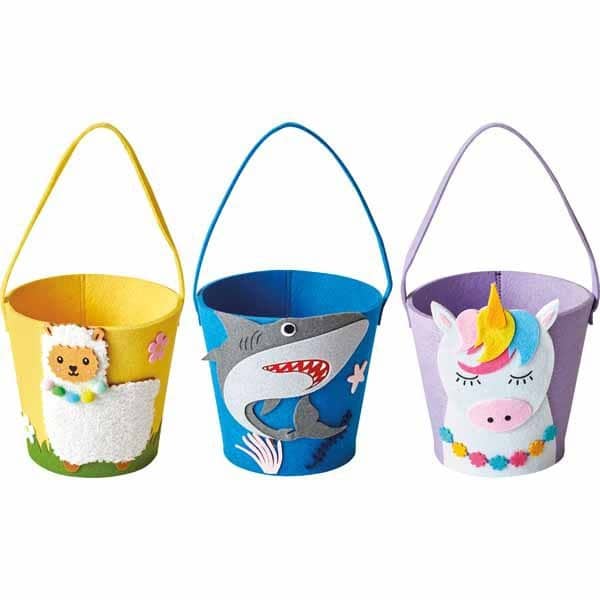Last Updated on March 12, 2019
 EDITOR’S NOTE: This particular post is a bit of a departure from our usual Aldi-themed writing, instead focusing on our underlying craft … namely, writing about products. This is written for bloggers who have thought about creating product review blogs like this one. If you’re a blogger, feel free to read on. If, on the other hand, you’re just an Aldi fan, you only have to read on if you want to.
EDITOR’S NOTE: This particular post is a bit of a departure from our usual Aldi-themed writing, instead focusing on our underlying craft … namely, writing about products. This is written for bloggers who have thought about creating product review blogs like this one. If you’re a blogger, feel free to read on. If, on the other hand, you’re just an Aldi fan, you only have to read on if you want to.
Also, in the interest of making this piece as as honest as possible, there are no affiliate links in this post. We don’t make any commission on any embedded link you see here.
I’ve been reviewing products, in either a semi-professional or professional capacity, since 2007. I’ve written for — and, at the time of this post, still contribute to — the Nintendo fansite Nintendojo, which has been writing about and reviewing games for Nintendo systems since 1996. I’m also the Editor-in-Chief of this website, Aldi Reviewer, which has been covering Aldi products (and some Trader Joe’s products) since 2016.
Product review blogs are awesome because they fill a need: namely, for people to find out if a product is any good before they go out and buy it themselves. Every day, people hear about or see a product and do a search to see if it’s any good. Sometimes they find what what they need … and sometimes they don’t. That second category is where opportunity can lie.
To be fair, many retailers, from Amazon to Dollar General, host their own user reviews. That might make you wonder if there is a market for product review blogs. I believe there is, and for two big reasons.
One, reviews on retailer sites aren’t always easily searchable, thorough, or even trustworthy. Finding a product review on a retailer site can sometimes be a chore, especially if a site sells tiny variations on the same product or if not all the products are listed on the site. Even when you do find the product, quality reviews can sometimes be hard to find. While some user reviews can be excellent, others can be borderline useless, with nothing more than one star followed by an “I hated this.” On top of that, there are documented instances where shady vendors have thrown up fake reviews on places like Amazon and Walmart.com to try and prop up a sketchy product.
Two, many companies don’t have product reviews on their site at all. There are a lot of companies that don’t have product reviews on their sites. This is true of many national brands and a fair number of retailers. The reasons vary, but one of them is simple cost: setting up a review platform and then moderating it takes time, effort, and money. A second issue is fear of bad reviews, since no reviews is always better for a product than bad ones.
These two problems create opportunities for an honest, thorough blogger.
Blogs that evaluate products can be fun, meaningful, and, depending on circumstances, potentially successful. I’ve experienced all of these personally. My time with Nintendojo has been a great ride, with the chance to experience a wide swath of games, write about subjects that I enjoy, and interact with some great fans. Aldi Reviewer has been just as much fun, giving me an opportunity to dive into Aldi products, write about Aldi as a company, and interact with all kinds of Aldi aficionados, all while watching the site garner millions of pageviews and thousands of comments.
But how does one go about writing a product review blog? What does one need to do to make it successful?
Here’s my take on how to get there. I don’t claim to know everything, but I’ve done this for a while and I hope what I’ve learned will be helpful. Also, if you have insights of your own, feel free to share them in the comments.
Step 1: Decide If It’s a Business or a Hobby
This is a fundamental question you have to ask first, because it’s going to shape everything you do next. For some people, product review blogging is a hobby, a pastime that they do for the pure fun of trying out various products and then writing about them. For other people, they see product review blogging as something enjoyable but also something they are doing in hopes of making a profit.
I don’t think there is a right or wrong answer to this question. Hobbies are great, and so are businesses. But it’s important to consider what you want your blog to be right at the outset, because it shapes a lot of the decisions you’re going to make later.
Here’s a quick example of why this matters: are you going to set a budget? For a hobby, you might not care quite as much about a budget, since you’re doing this for fun and it may just be about stuff you already buy anyway. For a business, on the other hand, you’re going to want to start thinking more about things like income streams, product spending, and possibly even secondary things like social media advertising. A business will also have to start thinking about taxes, including keeping receipts for business expenses. (I’m not a tax professional, so any decisions you make here are between you and your tax advisor.)
Again, no right answer here, but knowing what your goals are going in is important.
Step 2: Decide Whether to Go Broad or Niche
The title of this post relates to niche sites … but you might still wonder if you want to go niche or not, so let’s talk about it for a moment.
There are two schools of thought on blogs in general. One school says that a blog should write about a wide swath of things, covering a number of different topics. The other says to “niche down,” focusing on a very narrow topic.
If you’re writing for hobby, this question is less important. If this is all about fun for you … well, have fun. But if you’re writing for business — or if you’re writing for hobby but getting higher traffic is important to you — this question takes on more importance.
If you’ve done any Googling on the subject, there’s a good chance that you’ve seen a lot of blogs strongly suggesting you go niche rather than broad. I have to say that, in most cases, I reluctantly agree … and I say “reluctantly” because broad sites are a blast. I mean, it’s really liberating to have a site where you can write about almost anything. And, to be fair, there are broad-based sites that have achieved success, usually through a combination of sheer hard work and a strong connection with readers.
The problem is that, for broad-based sites, the odds are stacked against you. Or, rather, Google is stacked against you: the search engine likes to rank domains based on their authority in a certain subject, so if your broad site doesn’t write a lot of posts in a single subject (as corporately owned broad-based sites like CNN do), the few you do right are more likely to rank really badly in Google.
I’ve tried both kinds of blogs, and hasn’t even been close.
Aldi Reviewer, a niche site, generally ranks well in search because, even though we write about a lot of different kinds of products, our posts are all oriented around the unifying theme of Aldi. And we get good traffic for our trouble.
On the other hand, my wife and I have tried our hand at some broader-based sites over the years that, while really intellectually enjoyable, scored very little site traffic. As in 4 cents a month in ad revenue traffic.
It wasn’t hard to see why our broad-based sites struggled. When I went to Google Search Console and pulled up our page rankings for various keywords, our page rank for individual posts on our broad-based sites averaged somewhere in the 50s. In plain terms, that meant that a person would have to sift through 3-5 pages of Google searches to find our post … and nobody goes there. We know, because not only were our clicks nonexistent, even our impressions — people who saw our links but didn’t necessarily click on them — was just barely above zero.
Disclaimer: even writing in a niche is no guarantee of success, especially if that niche is already saturated. But if you’re going to write a product review blog, you help your chances of being seen greatly if you can find a specific theme to write about, particularly one that you don’t see much going on in search.
Step 3: Decide What Niche to Write About
Assuming you want to go niche, the question now is what niche to start reviewing. If you have a general idea that you want to write about products, but you’re not sure what products you’re looking to do, I strongly recommend waiting until you have some firm idea of where you want to go. Now, I know some people who search for posts like this hope to get some inspiration on exactly *what* to write. I’ll try to give you some general ideas, but for reasons that will be clear in a little bit, I can’t answer all of that for you because I’m not you. I’ll get back to that in a second.
As I mentioned above, Google tends to favor sites that follow a unifying theme, so a strong way to start would be to begin brainstorming themes. A theme could be:
- A category of products, like gardening equipment or musical instruments
- A specific business or industry, like Whole Foods or mobile games
- Products that align with a specific lifestyle, like parenting or travel
- Services that fulfill a want or need, like streaming services or rewards programs
If Google can see the theme (and Google is fairly adept at that if you do a good job of connecting the dots on your site), you’re more likely to be one of the posts that show up when people search for information. By contrast, if you’re writing about tents and belts and baby wipes and granola and there isn’t some connecting theme, Google may not play nice with your site.
Here are a few examples of sites that have achieved solid success in a niche. Every site listed is a non-corporate site, run by one or more regular bloggers. Every site listed also currently receives at least 100,000 pageviews a month, and some of them have a lot more than that. Finally, every site also operates primarily (or, in some cases, exclusively) as a product review site.
- What’s Good at Trader Joe’s: specializes in product reviews from the famed grocery store.
- Tracfone Reviewer: previews and reviews of the budget prepaid cell phone service.
- PlayStation Universe: a site devoted to all things involving Sony and gaming.
- Reverse Wine Snob: a site that tries and reviews budget wines for the average Joe.
Aldi Reviewer is another example, averaging more than 100k a month in page views.
Beyond that, there are a few things that help your chances.
One, your chances are higher if the products you cover don’t have much online coverage. The less saturated the answers are, the more fertile the ground. If you Google a product and the answers you get are either mediocre or totally irrelevant, you’ve got possibilities as a reviewer.
Two, it helps a lot if you know something about the products you’re reviewing. To an extent, you can make up for this by doing research — I know a lot more about Aldi now than I did before we started this blog — but having knowledge going into things, especially of competing products, gives you a leg up. For example, we’ve reviewed Aldi camping gear on this site, and it helps a ton that my family goes camping a lot and we own and use a lot of non-Aldi gear already.
One important related note: if your products require professional expertise that could bankrupt or kill a person (i.e. medical products, financial products), you really need to know what you’re doing, as Google takes authority in those life-affecting areas very seriously.
Three, you need to have some degree of interest — if not outright passion — in the product subjects you’re going to be writing about. If you don’t really enjoy testing and writing about these things, you’re going to lose interest a lot faster than you would otherwise. Some bloggers argue that success breeds passion, and they have a point, but that doesn’t help if success is slow in coming. If you don’t like writing and talking about the stuff, your site may never succeed because you’ll flame out before you get there.
Step 4: Determine if You Want to Write for Someone Else or Create Your Own Platform
There’s a good chance that, if you’ve come this far, you’re leaning toward writing on your own blog. Still, it’s good to at least ask yourself if there is any value in writing for other blogs. There are plenty of product review sites out there that take submissions, and some of them even pay for work and / or pass along products to review for free or low cost.
There are some decided positives to working under another site:
- It puts you in a situation that is already successful without having to build something from scratch.
- It puts you around other people who are product experts, which enhances your knowledge.
- It helps you learn some about nuts and bolts like editing, website management, and managing other writers, including what works and what doesn’t.
- Some of these sites have connections to review products, so you may not have to buy them yourself or pitch to retailers.
- It’s especially beneficial if you’re relatively new to the craft and you want to get some experience. It’s how I started out.
There are also negatives to working under another site:
- Working under someone else means that the business is theirs, and it means that editorial decisions are theirs, too. While this can be an opportunity to grow as a writer, it can also be a problem if you and the editor disagree.
- Working under someone else also means you have to get them to accept your writing. They might not. That’s something you don’t face if you’re the one running your own site.
Step 5: Decide on a Review Format
If you write for someone else, they dictate the format. Once you’ve decided to be your own boss, though, that falls to you. By definition, a review is an evaluation, so you’ll need to decide how you’re going structure the evaluations you write. Some questions you need to decide on include:
- Are you going to give your products a score?
- If you give scores, what kind of scoring system are you going to use?
- What criteria will you use to assign that score?
- What other components will you have in your product posts?
I don’t think there’s a right or wrong answer here. I’ve personally done sites that, for example, use scores, and I’ve used sites that don’t use scores. On this site, we opted not to use any scoring system, since many of our product reviews are food products that can vary widely based on personal taste. Instead, we focused on offering our thoughts, including a summary verdict at the end, and leaving comments open for people to agree or disagree.
On other sites, though, a letter-grade system or 5-star system is the norm, and those can work, too. It’s about what you’re comfortable with.
Step 6: Decide How You Will Get Your Products
There are basically two ways you can get your products: purchase them yourself or try to get them for free from a company or retailer.
If you purchase them yourself, you have to front the money for them. That’s a cost, and if you’re seeing this adventure as a business, it might be a cost you’re reluctant to make, especially if the products are expensive. At the very least, you’ll have to start thinking about a purchase budget.
But purchasing the products yourself can also give you a degree of trustworthiness, too. Your audience will know that you’re an independent voice on the product, the way Consumer Reports seeks to be. Also, if your site is successful, you’ll be able to cover those costs down the road. More on that in a moment.
As for free products? Well, the upside is that you don’t have to pay for them, per say … although some might argue that you have to count the value of the free products as income. (As I said earlier, I’m not a tax professional, so this is between you and your tax advisor.) A pipeline of products for review can be extremely helpful when the products are costly or your budget is small. Video game reviewing, for example, is a pretty expensive proposition if you don’t have developers willing to give you games to review, so in some cases it might be necessary just to be able to review the products at all.
One negative of free products is that you have to work to get them. That means contacting companies and dealing with them, including possible rejection. The smaller your operation is, the harder it can be to get free stuff.
A second negative is that a free product can ding the trustworthiness of your review. (If you received a product for free, you should always disclose that fact in your review.) I’m not saying it has to, as I have reviewed products for sites that were given as review copies, but you have to tread very carefully when someone else gives you free stuff. There’s a fine line between being a product reviewer and a brand ambassador or influencer. If you’re looking to provide free advertising for a company, that’s your call, but if your goal is to provide honest reviews, you have to be very self-aware in the way you go about evaluating products.
A third consideration of getting free products is how you’ll interact with the company if you don’t like their product. Are you willing to deal with potential feedback from the company if you give their stuff a negative review? Just things you have to keep in mind.
Step 7: Draft 20 Reviews … Offline
Before you even think about setting up a website, I strongly suggest writing twenty reviews offline, on a Word document or the like.
Why? Four big reasons.
One, you need to find out if you’ve got enough posts in you about your chosen topic. If you can’t write 20 reviews on the niche you’ve selected, you won’t be able to sustain a product review blog, especially if you’re blogging on a site by yourself. Blogging takes time and effort, and you need to find out early if you can do that. If you run out of ideas or burn out or decide your niche is too narrow, figuring that out in a Word document will save you a lot of time and heartache later. Many a blogger has spent hours, and possibly some money, carefully crafting their beautiful website … only to discover they can’t populate it with content.
Running short on content doesn’t mean all is necessarily lost, though. You might discover that a slightly different angle to your posts or niche might help you better achieve a quality website. But, again, those adjustments are a lot easier to do before your site goes live than afterward.
Two, so you can fine-tune your format. You might have a good idea of what your format is going to be, but until you actually see it in action, you may not know for sure if you like it. Drafting out a number of posts can help you work out the bugs in your format now, rather than fixing them on the fly after your site has gone live.
Three, so you can get a sense of time. Every kind of writing is a little different, and even if you’re a seasoned writer, you might not be 100% certain how long a product review will take to write, edit, and get ready. Drafting a pile of posts will help you get a feel for that, so you can start thinking realistically about, among other things, how frequently you want to post on your product review blog. If you think you’re going to post every day but realize you can only really come up with one post a week, you’ll know that before your site ever goes live.
Four, to help you set up a nice little launch. When you have a stock of posts at the very outset, it takes a lot of the stress out of your website launch. Instead of trying to frantically put everything together while managing your new site, you can schedule things out, analyze your early data, and see how things are working. You can even, if you want, schedule a number of posts early on, to give the site a nice collection of content right out of the gate. Even while your pre-written content is going out, you can start writing ahead … or, if you wish, contacting companies.
One objection people might have: if I write everything before I even have a site, how can I pitch my site to companies to get free stuff? The answer: you probably can’t, and that’s why I think it’s best to begin with products you pay for out of pocket. I know that means spending money, but if you choose to see this as a business, it’s a relatively small startup cost compared to most other kinds of businesses. It also spares you going to all this trouble trying to get free stuff only to find out that, say, your niche isn’t what you wanted or needed.
Step 8: Decide Where You Are Going to Create Your Site
I’m not going to get into all the specifics on how to create a website here (there are a million places that already do that), but I will point out that, broadly speaking, there are two kinds of sites: those that are self-hosted and those that aren’t.
- Self-hosted sites, like setting up a WordPress.org site through Bluehost or SiteGround, usually offer more flexibility and income potential, but they also require more technical expertise.
- Sites that aren’t self-hosted, like WordPress.com or Blogger, tend to be easier to set up and use, but they are more limited in their customization and, usually, their income potential.
A blogger has to figure this one out no matter what kind of blog they’re writing, but there are some special considerations for product review blogs. For one, if you’re going to pay out of pocket for products, you have to decide if you want your site to help pay for those costs. For another, if you’re soliciting free products, you have to take into consideration how your site looks to potential product suppliers. In both of these cases, there is a strong argument to be made for going the self-hosted route, especially if you view your work as a business rather than a hobby.
One more suggestion for Step 8: choose the site’s domain and name carefully. Sites can be successful with all manner of names, but in my experience, product review sites do best with names that make it clear what they’re reviewing. (Note the examples back in Step 3.) If you review organic produce but your site is doctorfurious.com, you may well lose traffic because people will think you’re not really related to the subject.
Case in point: in researching this post, someone pointed me to a product review blog they write. I realized that I’d seen the blog in web searches before, but I’d skimmed right over it … because the name made it sound like it wasn’t focused on that product.
Step 9: Decide If and How You Are Going to Monetize Your Site
As I’ve pointed out several times already, reviewing products has the potential to cost money. If you go the route of buying your products for review (and we do), you need a means to cover those expenses. Monetizing the site is a way to do that. If you have a self-hosted site, you’re already at something of an advantage here, but even some sites that aren’t self hosted (i.e. Blogger, Wix) can accommodate some forms of monetization.
(Fair warning: income from your site may be taxable. As I said earlier, I’m not a tax professional, so how you handle your taxes is between you and your tax advisor.)
I won’t go over all the ways you can monetize your site, but a few stand out, particularly for product reviewers.
One is ad networks. Joining a network like Google AdSense or Media.net can create passive income, while higher-traffic blogs can seek out the likes of Mediavine or our ad network, AdThrive. Even if you don’t sell an actual physical product, you’re making a little money every time someone reads your content or clicks on an ad.
Another intuitive option for product review blogs is affiliate marketing, where you receive a commission based on people who click through a link and then make a purchase. Many companies do this, including Amazon (through Amazon Affiliates, which we use), Walmart, Target, and countless other small and large companies. I advise being very careful here, as a glowing product review tied to a commission if your audience buys the product can look like a conflict of interest, no matter what disclaimers you put in your post.
We’re not the final word on this, but I will say that I try to be very careful about affiliate links. We include affiliate links when there are noteworthy alternatives to Aldi products, but we try to be careful not to go overboard. The last thing I want is to hawk products. Instead, we try to use them as a point of comparison to what Aldi sells.
So how else can you make money? Depending on the products you review, you might also write books relevant to your subject (something we did), compose courses, ask people to sponsor you through a site like Patreon, or possibly even offer services. There is no shortage of ideas you might try to monetize your site.
At the end of the day, though, it’s important not to forget that the core of a successful product review site is what the name suggests: well-written, useful, trustworthy product reviews. Do that, and you set yourself up well for everything else.
Thoughts? Insights? Experiences? Let us know in the comments.





Great article, thank you for your expertise.